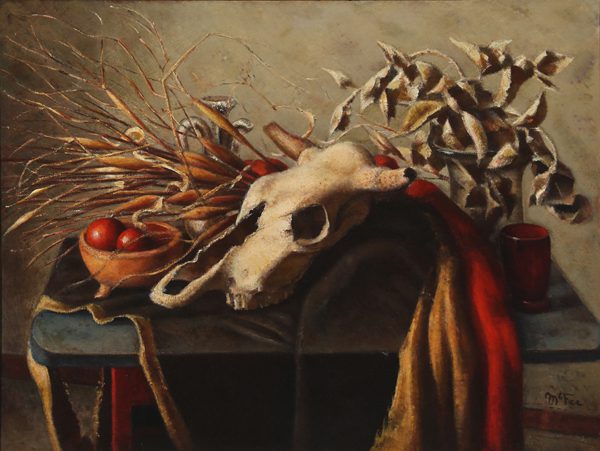The Skull

Henry Lee McFee
The Skull
Oil on canvas, c. 1914
30 x 40 inches
Promised gift of Nancy Dustin Wall Moure
PG.2004.001.014
In the 1910s and 1920s, Henry Lee McFee was a prominent member of the Woodstock artists’ colony in New York and a significant pioneer of early twentieth-century American modernism. By the 1930s, artists and writers across the country were making works of art celebrating America’s regional differences in a realistic style. The skull and dried flora of The Skull are representative of the American Southwest, where McFee was on the faculty of the Claremont Graduate School and Scripps College.
However, McFee’s decision to focus on this subject matter may also be due to the artist’s private circumstances. Not long after relocating to Southern California, McFee suffered a serious illness. The heightened awareness of his mortality caused him to create a number of vanitas paintings, a still life genre in which objects, such as skulls, are symbolic of the fleeting nature of life and the certitude of death. The drooping plant life and torn drapery in the painting may also be viewed in this context. Through a small opening in the worn blanket draped across the table, one glimpses the floorboards beyond, a subtle allusion to decay and the realm beyond life.
The Skull was formerly in the collection of the Metropolitan Museum of Art in New York. The museum purchased it in 1950 with monies from the George A. Hearn Fund, possibly out of a solo exhibition of McFee’s work at the Rehn Gallery in January of that year.






